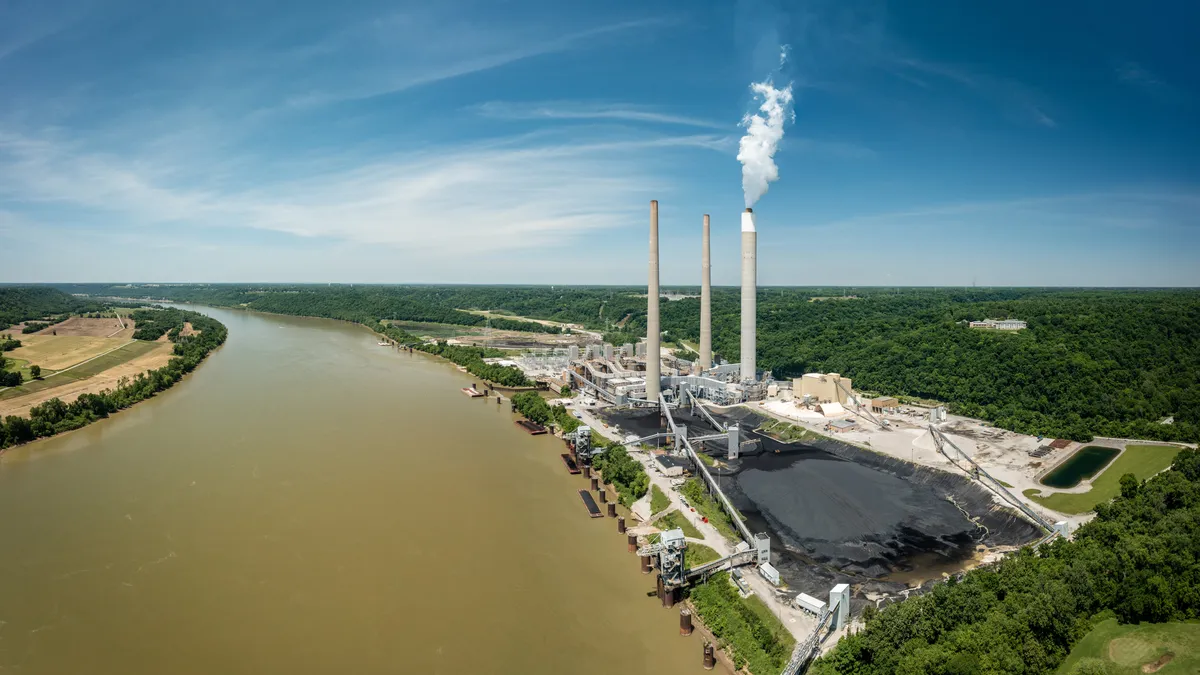In a move that could add new Clean Air Act compliance requirements for coal-fired power plants, the Environmental Protection Agency on Wednesday tightened the primary annual air quality standard for fine particulate matter, a substance called PM2.5, to 9 micrograms per cubic meter from 12 µg/m3.
The EPA estimates that 99% of U.S. counties will meet the so-called soot standard in 2032, likely the earliest year that states would need to meet it.
“This final air quality standard will save lives and make all people healthier, especially within America’s most vulnerable and overburdened communities,” EPA Administrator Michael Regan said in a statement.
The EPA estimates the new standard will prevent up to 4,500 premature deaths and 290,000 lost workdays, yielding up to $46 billion in net health benefits in 2032, according to a summary of the new standard. The agency said it would cost $590 million in 2032 to meet the standard.
Scientific evidence shows that long- and short-term exposures to fine particulate matter, or soot, can harm people’s health, leading to heart attacks, asthma attacks and premature death, the EPA said. Sources of PM2.5 include coal-fired power plants, vehicles, industrial facilities, agricultural dust and fires.
When the EPA was considering revising its standard, the agency’s Clean Air Scientific Advisory Committee found that the primary annual PM2.5 standard should be lowered, with the panel’s majority recommending it be reduced to between 8 μg/m3 and 10 μg/m3.
In its final rule, the EPA also modified the PM2.5 monitoring network design criteria to account for heightened risks faced by environmental justice communities.
The EPA decided to keep the primary 24-hour PM2.5 standard at its current level of 35 µg/m3, saying that level, when combined with the reduced annual standard, was adequate to protect public health.
The EPA’s proposal to tighten its PM2.5 annual standard was opposed by the Power Generators Air Coalition, which includes utilities and trade groups such as American Electric Power, Arizona Public Service, Southern Co., the Tennessee Valley Authority and the National Rural Electric Cooperative Association.
Among other things, the group said in comments on EPA’s proposal that there had been little change in the scientific evidence since the agency in 2020 determined the primary annual standard should remain unchanged at 12 µg/m3.
The U.S. Chamber of Commerce estimates the new standard will put 569 counties out of compliance with the PM2.5 standard and push many other counties close to the limit. “Compliance with the new standard will be very difficult because 84% of emissions now come from non-industrial sources like wildfires and road dust that are costly and hard to control,” Marty Durbin, senior vice president for policy at the U.S. Chamber of Commerce, said in a statement.
Environmental groups, including the Sierra Club, praised the EPA’s decision. “The decision to strengthen the annual particulate matter standards is more than just policy; it's about securing clean and safe air for our families and communities,” Ben Jealous, Sierra Club executive director, said in a statement. “It's about keeping kids in school, and protecting ourselves and our neighbors from the very real risks of asthma, heart attacks, and premature death.”















